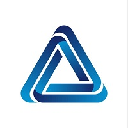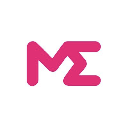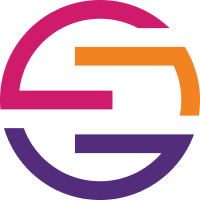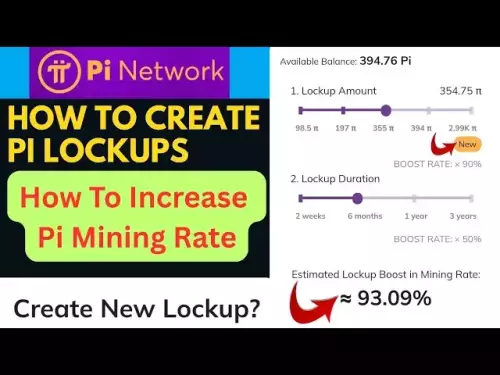 |
|
 |
|
 |
|
 |
|
 |
|
 |
|
 |
|
 |
|
 |
|
 |
|
 |
|
 |
|
 |
|
 |
|
 |
|
人工智能的快速增长显着增加了全球对计算基础设施的需求。随着数据密集型应用程序变得越来越普遍,需要可访问,可扩展的需求

The rapid growth of artificial intelligence and data-intensive applications has significantly increased global demand for computing infrastructure. However, a significant portion of this infrastructure remains idle, while developers and researchers struggle to access the resources they need.
人工智能和数据密集型应用程序的快速增长已大大增加了全球对计算基础设施的需求。但是,这些基础设施的很大一部分仍然闲置,而开发人员和研究人员则难以获取所需的资源。
The market for cloud computing is currently dominated by a few large providers, such as Amazon Web Services (AWS), Microsoft Azure, and Google Cloud, Together, these centralized cloud providers control more than 60% of the global computing resources, leaving a highly concentrated market with limited competition and high costs for users.
云计算市场目前由一些大型提供商(例如亚马逊Web服务(AWS),Microsoft Azure和Google Cloud)主导,这些集中式云提供商控制了超过60%的全球计算资源,使高度集中的市场具有有限的竞争和较高的用户成本。
Enter Akash Network, a decentralized cloud computing marketplace that aims to provide a more accessible, affordable, and scalable alternative to traditional cloud providers. By leveraging the principles of blockchain technology and a community-driven approach, Akash is revolutionizing the way we think about and interact with cloud infrastructure.
输入Akash Network,这是一个分散的云计算市场,旨在为传统的云提供商提供更容易访问,负担得起和可扩展的替代方案。通过利用区块链技术的原理和社区驱动的方法,阿卡什正在彻底改变我们思考的方式并与云基础架构互动。
Centralized cloud providers have come to dominate the market, with AWS, Microsoft Azure, and Google Cloud being some of the major players. This centralized model introduces several challenges:
集中式的云提供商已经占据了市场的主导地位,AWS,Microsoft Azure和Google Cloud是一些主要参与者。这种集中模型引入了一些挑战:
These limitations highlight the need for a decentralized and cooperative approach to cloud computing.
这些局限性凸显了对云计算进行分散且合作的方法的必要性。
Decentralized cloud solutions offer several advantages over traditional models, but they also present unique challenges. Many decentralized providers struggle with fully utilizing their available resources, leading to idle infrastructure and wasted potential. Moreover, the lack of a standardized on-demand marketplace exacerbates these issues, resulting in inconsistent deployment processes and a fragmented user experience for clients.
分散的云解决方案比传统模型具有多个优势,但它们也带来了独特的挑战。许多去中心化的提供商努力充分利用其可用资源,导致闲置基础设施并浪费了潜力。此外,缺乏标准化的按需市场加剧了这些问题,从而导致部署流程不一致,并且为客户提供了零散的用户体验。
Despite the promising potential of decentralized cloud solutions, these challenges hinder their widespread adoption. To realize the full benefits of a decentralized cloud ecosystem, it is crucial to develop efficient coordination mechanisms, seamless integration with existing developer tooling, and a deep understanding of the evolving needs of the decentralized application landscape.
尽管分散的云解决方案具有有希望的潜力,但这些挑战阻碍了他们广泛的采用。为了实现分散的云生态系统的全部好处,建立有效的协调机制,与现有开发人员工具的无缝集成以及对分散应用程序景观不断发展的需求的深入了解至关重要。
Akash Network is a decentralized, open-source marketplace for cloud computing that connects clients needing computing power (tenants) with providers offering spare resources. It provides a cost-effective, secure, and scalable alternative to traditional centralized cloud providers like AWS, Microsoft Azure, and Google Cloud.
Akash Network是一个分散的开源市场,用于云计算,将需要计算能力(租户)的客户与提供备用资源的提供商联系起来。它为传统的集中式云提供商(如AWS,Microsoft Azure和Google Cloud)提供了具有成本效益,安全和可扩展性的替代品。
Akash aims to solve the problems of existing decentralized cloud providers by combining the best aspects of centralized and decentralized models. It introduces a new blockchain token, a flexible service definition language, and a novel reverse-auction mechanism to create an efficient and competitive market for cloud resources.
Akash旨在通过结合集中和分散模型的最佳方面来解决现有的分散云提供商的问题。它引入了一种新的区块链代币,灵活的服务定义语言以及一种新颖的反拍卖机制,以创造有效且竞争性的云资源市场。
At the heart of the Akash Network lies a simple yet powerful concept: to enable anyone with idle computer resources to become a provider and those needing computing power to become a tenant. This creates a decentralized ecosystem where both parties can benefit.
Akash网络的核心是一个简单而强大的概念:使任何具有空闲计算机资源的人成为提供商,以及那些需要计算能力的人成为租户。这创建了一个分散的生态系统,双方都可以受益。
The architecture of the Akash Network is built on three key components:
Akash网络的体系结构建立在三个关键组件上:
The Akash marketplace is a decentralized cloud platform that uses a unique approach to match clients with providers offering spare compute through a reverse auction.
Akash Marketplace是一个分散的云平台,它使用独特的方法将客户与提供商通过反向拍卖提供备用计算的提供商匹配。
Clients needing computing resources, referred to as tenants, begin by creating a Service Definition Language (SDL) file. This file acts as a blueprint for the client's requirements, detailing the desired resources and deployment parameters.
需要计算资源(称为租户)的客户,首先创建服务定义语言(SDL)文件。该文件充当客户需求的蓝图,详细介绍了所需的资源和部署参数。
The SDL file is written in a YAML format and includes specifications such as:
SDL文件以YAML格式编写,包括:
Once completed, the client posts the SDL file to the Akash blockchain as an order, making the requirements visible to all resource providers in the network.
完成后,客户端将SDL文件作为订单发布到Akash区块链,从而使网络中所有资源提供者可见。
Providers, on the other hand, have the option to register their available computing resources on the blockchain. These resources are described in terms of resource units (RUs), where 1 RU is equivalent to 1 vCPU, 1 GiB of RAM, and 100 GiB of persistent storage.
另一方面,提供商可以选择在区块链上注册其可用的计算资源。这些资源是用资源单元(RU)来描述的,其中1 RU等于1 VCPU,1 GIB RAM和100 GIB的持久存储。
As providers come online, they search for orders that match their capabilities and begin bidding on them in a competitive reverse auction. In this auction, providers bid to offer the lowest price while still meeting the client's minimum specifications.
随着提供者的上网方式,他们搜索符合其功能的订单,并开始在竞争性的逆转拍卖中向他们竞标。在这次拍卖中,提供商愿意提供最低的价格,同时仍达到客户的最低规格。
After providers submit their bids, the client can view and evaluate them based on price, the provider's ability to meet the minimum requirements, and any additional preferences the client may have.
提供者提交出价后,客户可以根据价格查看和评估它们,提供者满足最低要求的能力以及客户可能拥有的任何其他偏好。
After selecting a provider, the client creates a lease on the blockchain to finalize the agreement. This lease is an immutable record of the terms of service between the client and provider, including the types and amounts of resources being leased, the lease duration, and the price per epoch (a time period on the blockchain).
选择提供商后,客户在区块链上创建租赁以最终确定协议。该租约是客户和提供商之间服务条款的不变记录,包括租赁的资源类型和数量,租赁期限和每个时期的价格(区块链上的时间段)。
Once the lease is finalized, the provider allocates the requested resources and deploys the client's containerized application. Akash handles orchestration tasks such as configuring networking, storage, and runtime parameters to ensure the application launches successfully.
租赁最终确定后,提供商将分配请求的资源并部署客户的容器化应用程序。 Akash处理编排任务,例如配置网络,存储和运行时参数,以确保应用程序成功启动。
Following deployment, Akash continues to manage the workload by monitoring resource usage, automatically scaling capacity as needed, and maintaining uptime throughout the lease period. This lifecycle management ensures stable performance and efficient utilization of decentralized infrastructure.
部署后,Akash继续通过监视资源使用情况,根据需要自动扩展能力并在整个租赁期内维持正常运行时间来管理工作量。这种生命周期管理可确保对分散基础设施的稳定绩效和有效利用。
The Akash marketplace uses blockchain technology to ensure transparent, secure, and verifiable transactions. All payments are made in AKT, the native token of the Akash Network. A "take fee" is collected from each lease—10% of the lease price for AKT payments and 20% for other tokens—which is distributed to the network stakers through the Take Income Pool. This structure incentivizes staking and
Akash Marketplace使用区块链技术来确保透明,安全和可验证的交易。所有付款都是在Akash网络的本地令牌Akt中进行的。从每种租赁中收取了“收费费”,这是AKT付款的租赁价格的10%,其他代币的租赁价格为20% - 通过收入收入池分发给网络Stakers。这种结构激发了裁决和
免责声明:info@kdj.com
所提供的信息并非交易建议。根据本文提供的信息进行的任何投资,kdj.com不承担任何责任。加密货币具有高波动性,强烈建议您深入研究后,谨慎投资!
如您认为本网站上使用的内容侵犯了您的版权,请立即联系我们(info@kdj.com),我们将及时删除。
-

- 政府关闭,特朗普会议,僵局:纽约客的加密货币
- 2025-09-30 09:46:16
- 分析政府关闭的潜在影响,特朗普的参与以及政治僵局对加密货币市场的影响。期望波动性和监管延误,但不要惊慌!
-

- 令牌证券,稳定币和协同作用:纽约市数字融资的新标准
- 2025-09-30 09:39:55
- 探索令牌证券和稳定币之间的协同作用,它们对数字金融的影响以及塑造其未来的监管景观。
-

-

- 比特币激增:看涨的因素和季节性趋势加剧了集会
- 2025-09-30 09:22:57
- 比特币最近的激增是由机构兴趣,战略的收购和季节性趋势所驱动的。 “上十月”是否要留下来?
-

- Binance硬币突破:骑加密货币波
- 2025-09-30 09:20:58
- 在公用事业和机构利益的推动下,深入研究了Binance Coin最近的突破。 BNB是加密世界中的下一个大事吗?
-

- 比特币,公司财政部和金融科技初创公司:金融新时代
- 2025-09-30 09:20:57
- 探索比特币如何重塑公司国库策略以及这种不断发展的景观中金融科技初创公司的机遇/挑战。
-

-

- 加密薪资符合Floki:导航薪资难题
- 2025-09-30 09:15:55
- 探索加密货币,FLOKI的交集以及在分散世界中管理财务的挑战。
-

- 加密宏监视列表:与纽约人的边缘导航波动
- 2025-09-30 09:03:54
- 关键加密趋势,宏观报告和诸如基于Eggman,popcat和Pnut的守望列表宝石的细分,为导航市场提供了见解。

























































